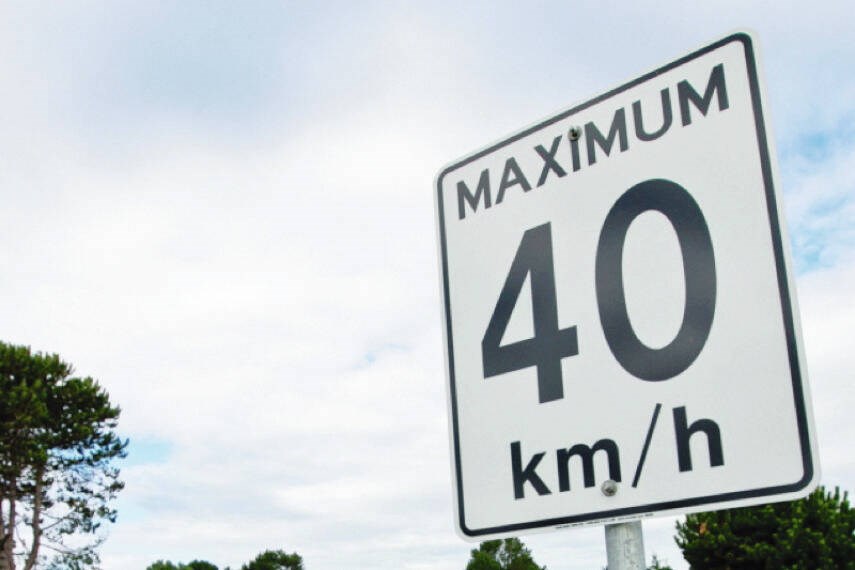The information world, currently overflowing with “alternative facts” and “post truths” and the downright ridiculous, seems to be flourishing more than ever. Ironic that in an age where we’ve never had so much access to information, that feelings, opinions and myths presented as facts, for many seem to somehow carry more weight than the things we see, know and can actually prove.
It occurred to me that the driver safety world is not immune to the “myth phenomenon” by any means.
So let’s have a look at some of those driving myth biggies that never seem to die.
1) You’re allowed to be 10% over the speed limit.
False. Doing 51 km/h in a 50 zone is speeding.
Common sense, of course, says we don’t want every cop spending their entire career in traffic court. There’s a good margin of discretion used before any speeding ticket is written for that reason, but also to account for any possible errors in the radar gun or your speedometer.
Some U.S. states, by law, grant a 10 to 15 km/h overage to keep the numbers down, but in an accident case in a civil court they will examine every click you are over.
2) I know of (insert number) tricks to lower my blood alcohol level.
False — unless one of those tricks involves a total in-car blood transfusion before the cop asks you to lower your window.
Once consumed, those four margaritas are in your bloodstream and the only thing that makes them go away is time. Blood alcohol levels continue to rise, then peak, about an hour after your last drink.
For a “normal” person, a good night out requires seven to eight hours or more to return to Sober City.
3) Marijuana doesn’t impair like alcohol.
False. To be precise, puffing a joint or two might affect you in different ways than a few drinks, but it’s still an impairment.
Weed is a psychoactive drug capable of altering mood, mind or pain. Any substance altering your mental state can affect your attention span, depth and time perception and/or your general awareness — the things you actually need the most when driving.
4) I’ve just passed my driver’s test and scored well. Now I can drive like everyone else.
False. Congratulations, but check the stats. You’ve also just entered the highest risk category for crashes of all drivers, especially if you’re a 16- to 20-year-old male.
Three problems dominate in this age group: inexperience leading to excessive overconfidence and inattention; an inability to fully appreciate consequences of deliberately hazardous actions and; access and willingness to use alcohol and drugs.
The numbers don’t lie. That’s why you pay way more for car insurance than other drivers.
5) Hands on the wheel at 10 and 2 (o’clock) is the safest wheel to steer a vehicle.
False. But to be fair the “10 and 2 rule” was the correct procedure for decades. So what changed? Answer: Airbags.
Numerous crash events early on in the airbag era showed experts that the explosive force released through their deployment was enough to damage arms and wrists positioned at 10 and 2.
There is also a danger of having your forearms jammed back into your face and head. Going to the 9 and 3 position allows the airbag a clear path to cushion the old melon.
Glove Box: We’re in the middle of the “real” summer now and the number of electric kick-style scooters popping up on our roads is officially a worry. They’re illegal most places in B.C., as I’ve written before. B.C. has throughout the province where they can be operated: Kelowna; Nanaimo; Vernon; Richmond; 91原创; the city and district of North 91原创; and West 91原创.
It would also be simple enough to enact laws preventing their sale or rental, but for some reason that doesn’t happen. And when you create these legal vacuums, where you can sell something you’re not actually allowed to use — people fill the void and take liberties.
I saw a young person on Sunday with a modified scooter, sporting a centre post with a seat attached to it, zipping down the middle of a busy road. Fortunately the rider had a full face helmet, which I guess is a statement in itself about how he or she intends to use it.
Last Monday, I saw a helmet-less woman on her scooter on the road leading out of a local park, an infant in a child carrier strapped to her front.
Once we’ve heard from the leaders and citizens in B.C.’s scooter trial cities we can make some informed, balanced choices about how they fit into our transportation culture.
Until then, shame on the people renting or selling these devices. I hope you have robust liability insurance.



